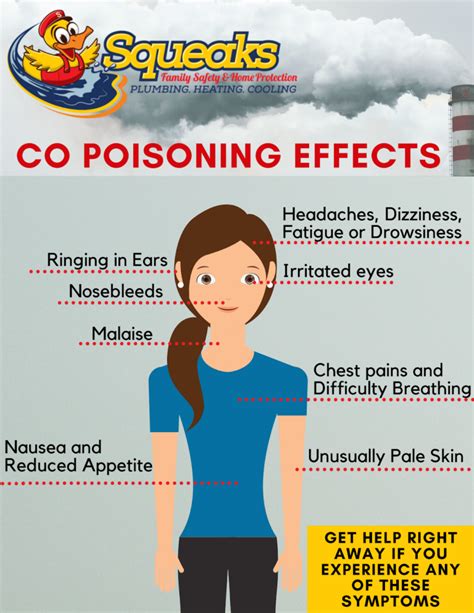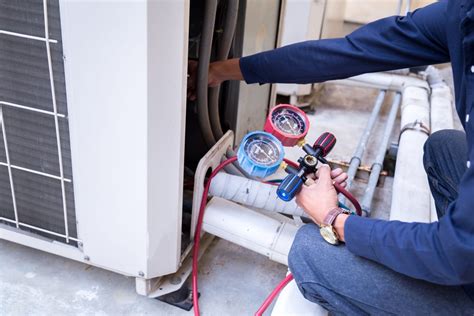Gas Leak Symptoms

Gas leaks can be a serious and potentially life-threatening hazard in any home or workplace. Recognizing the symptoms of a gas leak is crucial for ensuring the safety of individuals and taking prompt action. This comprehensive guide aims to shed light on the various signs and symptoms associated with gas leaks, offering an in-depth analysis of this critical issue. By understanding these symptoms, we can empower individuals to detect and address gas leaks effectively, minimizing potential harm.
The Signs and Symptoms of a Gas Leak

Gas leaks can emanate from various sources, including faulty appliances, damaged pipelines, or even human error. Recognizing the signs and symptoms is the first step in addressing this hazardous situation.
1. Unusual Odor
One of the most distinctive signs of a gas leak is an unusual odor. Natural gas is odorless, but utilities add a chemical called mercaptan to give it a distinctive, pungent smell. This smell is often described as similar to rotten eggs or sulfur. If you notice this strong, unpleasant odor, it could be a clear indicator of a gas leak.
2. Physical Symptoms
Exposure to gas leaks can also lead to a range of physical symptoms in individuals. These symptoms can vary depending on the concentration of gas and the duration of exposure.
Common physical symptoms include:
- Headache: A persistent and severe headache is often one of the first signs of gas exposure. It can be throbbing and may worsen over time.
- Dizziness and Lightheadedness: Individuals may feel dizzy, disoriented, or lightheaded. This can lead to a loss of balance and coordination.
- Nausea and Vomiting: Nausea is a common reaction to gas inhalation. In some cases, this may progress to vomiting.
- Fatigue: Gas exposure can cause excessive fatigue and a general feeling of weakness.
- Breathing Difficulties: Shortness of breath, chest tightness, and coughing are indicative of respiratory distress caused by gas inhalation.
3. Visual Indicators
Gas leaks can also manifest through visual cues. Keep an eye out for the following:
- Hissing or Bubbling Sounds: If you hear a hissing noise coming from a gas appliance or pipeline, it could indicate a leak. Similarly, bubbles forming in standing water near a gas line are a clear sign of a leak.
- Dead or Discolored Vegetation: A gas leak outdoors can cause the grass, plants, or trees nearby to turn brown or die unexpectedly. This is because natural gas displaces oxygen, leading to plant death.
4. Appliance Malfunctions
Gas leaks may also be signaled by the abnormal behavior of gas appliances. Be vigilant for the following:
- Increased Energy Bills: Unexplained spikes in your energy bills could be a sign of a gas leak. Leaking gas can lead to inefficient combustion, resulting in higher energy consumption.
- Pilot Lights Blowing Out: If the pilot light on your gas appliances frequently blows out or is difficult to relight, it could be due to a gas leak.
- Flammable Items Catching Fire Easily: If you notice that normally non-flammable items like newspapers or dust suddenly catch fire easily, it could be due to an excess of gas in the air.
Safety Measures and Precautions

If you suspect a gas leak, it is crucial to take immediate action to ensure your safety and the safety of those around you.
Follow these steps:
- Evacuate the Area: If you smell gas or notice any physical symptoms, evacuate the premises immediately. Do not operate any electrical devices or light matches, as this could trigger an explosion.
- Alert Others: Inform others in the vicinity about the potential gas leak. Help them evacuate if needed.
- Contact Emergency Services: Dial the emergency services number in your area. Most regions have a dedicated gas emergency number. Provide them with your location and the nature of the incident.
- Do Not Re-Enter: Do not re-enter the premises until the gas leak has been confirmed to be fixed and the area is declared safe by professionals.
Long-Term Prevention
Preventing gas leaks is crucial for long-term safety. Here are some preventive measures:
- Regular Maintenance: Schedule regular maintenance checks for your gas appliances and pipelines. Qualified technicians can identify and fix potential issues before they become major leaks.
- Install Gas Detectors: Consider installing gas detectors in your home or workplace. These devices can alert you to gas leaks even when the odor is not detectable.
- Educate Yourself and Others: Stay informed about gas safety. Teach your family, colleagues, and friends about the signs and symptoms of gas leaks so that everyone can respond appropriately.
The Importance of Prompt Action
Gas leaks are not to be taken lightly. Prompt action can prevent serious accidents and even save lives. By recognizing the symptoms and taking immediate steps to address the issue, you contribute to a safer environment for yourself and your community.
Real-Life Scenarios
Consider the following real-life scenarios to understand the potential impact of gas leaks and the importance of early detection:
| Scenario | Outcome |
|---|---|
| A homeowner notices a faint sulfur smell and ignores it, assuming it’s a temporary issue. A week later, a spark from a light switch ignites the gas, leading to an explosion. | Severe property damage, injuries, and potential loss of life. |
| An office building’s maintenance staff regularly checks for gas leaks and promptly addresses a minor leak. They also educate employees about gas safety. | No major incidents, and employees feel confident in their ability to respond to gas leaks. |
| A restaurant owner installs gas detectors and ensures all staff are trained in gas safety. One day, a detector alerts them to a leak, and they evacuate promptly. | No injuries, and the restaurant reopens safely after the issue is resolved. |

These scenarios highlight the potential consequences of gas leaks and the importance of proactive safety measures.
Conclusion
Gas leaks are a serious matter that demands our attention and vigilance. By understanding the signs and symptoms outlined in this guide, individuals can play a crucial role in preventing accidents and ensuring a safer environment. Remember, when in doubt, always err on the side of caution and seek professional assistance.
How can I confirm if there’s a gas leak if I don’t have a gas detector?
+
If you suspect a gas leak but don’t have a detector, the best course of action is to leave the premises immediately and contact your local gas company or emergency services. They have the expertise and equipment to safely detect and address gas leaks.
Are there any long-term health effects associated with gas leaks?
+
Prolonged exposure to high concentrations of natural gas can have long-term health effects, including respiratory issues and chronic headaches. However, it’s important to note that gas leaks are typically addressed promptly, minimizing the risk of long-term exposure.
Can gas leaks occur in areas without natural gas pipelines or appliances?
+
While gas leaks are more common in areas with natural gas infrastructure, they can also occur due to other sources, such as propane tanks or even vehicle emissions in enclosed spaces. It’s important to be vigilant regardless of your location.



